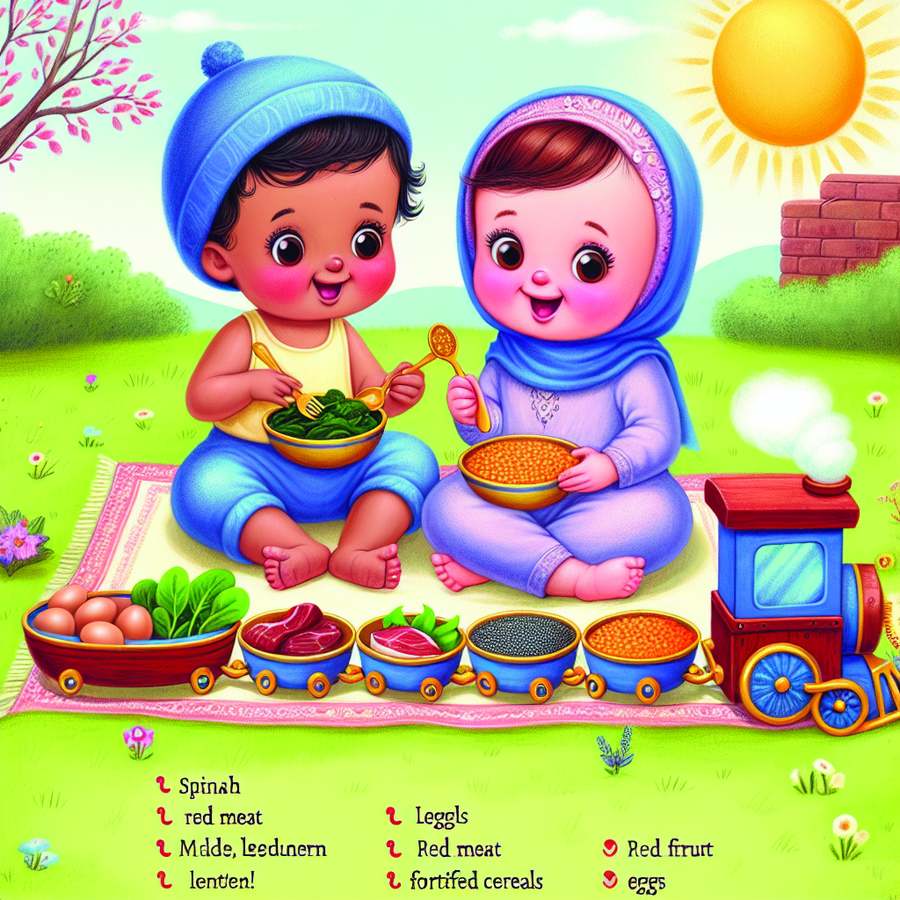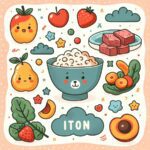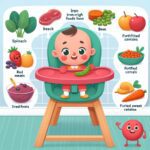Introducing solid foods to your baby’s diet is a significant milestone that sets the foundation for healthy eating habits. One vital nutrient to focus on during this transition is iron. Top iron-rich foods for babies starting on solids not only support their rapid growth and development but also prevent iron deficiency. This guide dives deep into the best sources of iron for your little one, ensuring they get a head start on a nutritious journey.
The Importance of Iron in Your Baby’s Diet
Iron plays a crucial role in your baby’s development. It’s essential for making hemoglobin, a component of red blood cells that carries oxygen throughout the body. For babies transitioning to solid foods, meeting their iron needs is critical for cognitive development, energy levels, and overall health. According to the World Health Organization, infants starting on solids should be given iron-rich foods twice a day to prevent deficiency and support optimal growth.
Despite its importance, many parents struggle with incorporating iron-rich foods into their baby’s diet. Understanding which foods are best and how to prepare them can make this process smoother and ensure your baby benefits from these crucial nutrients.
Top Iron-Rich Foods for Babies Starting on Solids
Introducing top iron-rich foods for babies starting on solids is a game-changer for their health and development. Here are some of the best sources of iron that are suitable for babies making the transition to solid foods:
- Meat purees, especially beef and chicken, are great sources of heme iron, which is easily absorbed by the body.
- Iron-fortified cereals, a staple in many baby diets, provide a significant amount of non-heme iron.
- Lentils and beans, mashed for easy consumption, are not only rich in iron but also in protein and fiber.
- Dark green leafy vegetables like spinach and kale can be cooked and pureed to enhance iron absorption.
- Prune juice, although not a solid, can be a beneficial addition to your baby’s diet to boost iron and help with digestion.
For the best absorption of iron, it’s recommended to pair these foods with sources of vitamin C, such as tomatoes, bell peppers, or oranges. This combination enhances the body’s ability to absorb non-heme iron found in plant-based foods.
Feeding your baby a variety of top iron-rich foods for babies starting on solids ensures they receive both heme and non-heme iron, covering all bases for their dietary needs. For more detailed recipes and ideas, you can visit our comprehensive guide on iron-rich vegetarian recipes for 9-month-old babies.
Incorporating Iron-Rich Foods into Your Baby’s Diet
Knowing which foods are rich in iron is only half the battle. The next step is incorporating these top iron-rich foods for babies starting on solids into your baby’s daily meals in a way that’s both appealing and nutritious. Here are some tips to help you get started:
- Start with single-ingredient purees to monitor for any allergic reactions or sensitivities.
- Gradually introduce new textures and combinations, such as mixing iron-fortified cereal with breast milk or formula.
- Use meal times as an opportunity for sensory exploration, allowing your baby to touch and taste a variety of iron-rich foods.
- Be patient and persistent, as babies often need to be exposed to new foods several times before accepting them.
Remember, every baby is unique, and what works for one may not work for another. Paying attention to your baby’s cues and consulting with your pediatrician can help tailor a diet that meets their individual needs while ensuring they get enough iron.
For more tips on introducing solids and managing common challenges, check out our articles on how to introduce solid foods to a 6-month-old baby with allergies, dealing with picky eaters, and adjusting your baby’s diet to manage constipation.
In conclusion, introducing top iron-rich foods for babies starting on solids is crucial for their development and overall health. By focusing on a variety of iron sources and ensuring proper preparation and pairing, you can support your baby’s growth and set the stage for a lifetime of healthy eating habits.













